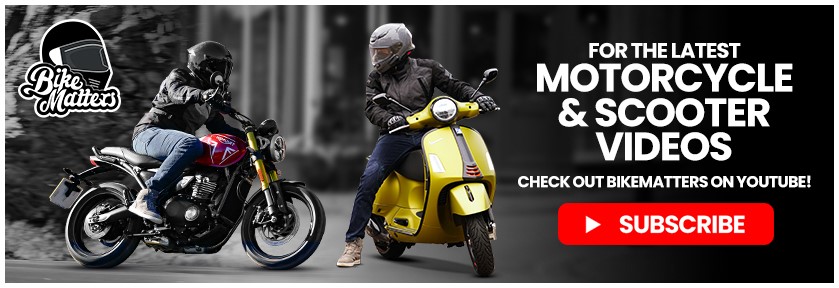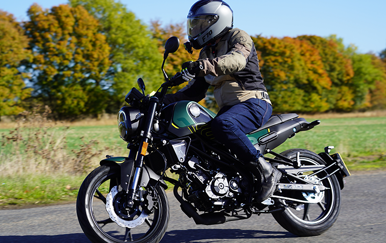If you've just bought your new motorcycle or scooter from your mate around the corner, it's fairly self-explanatory how to get it home. But what if you found the perfect bike hundreds of miles away? How do you go about sorting everything out for your maiden voyage?
If you've followed our other guides on the Lexham blog about buying your new or used bike, you might also be wondering how best to transport it home, and there can be more to it than you first think!
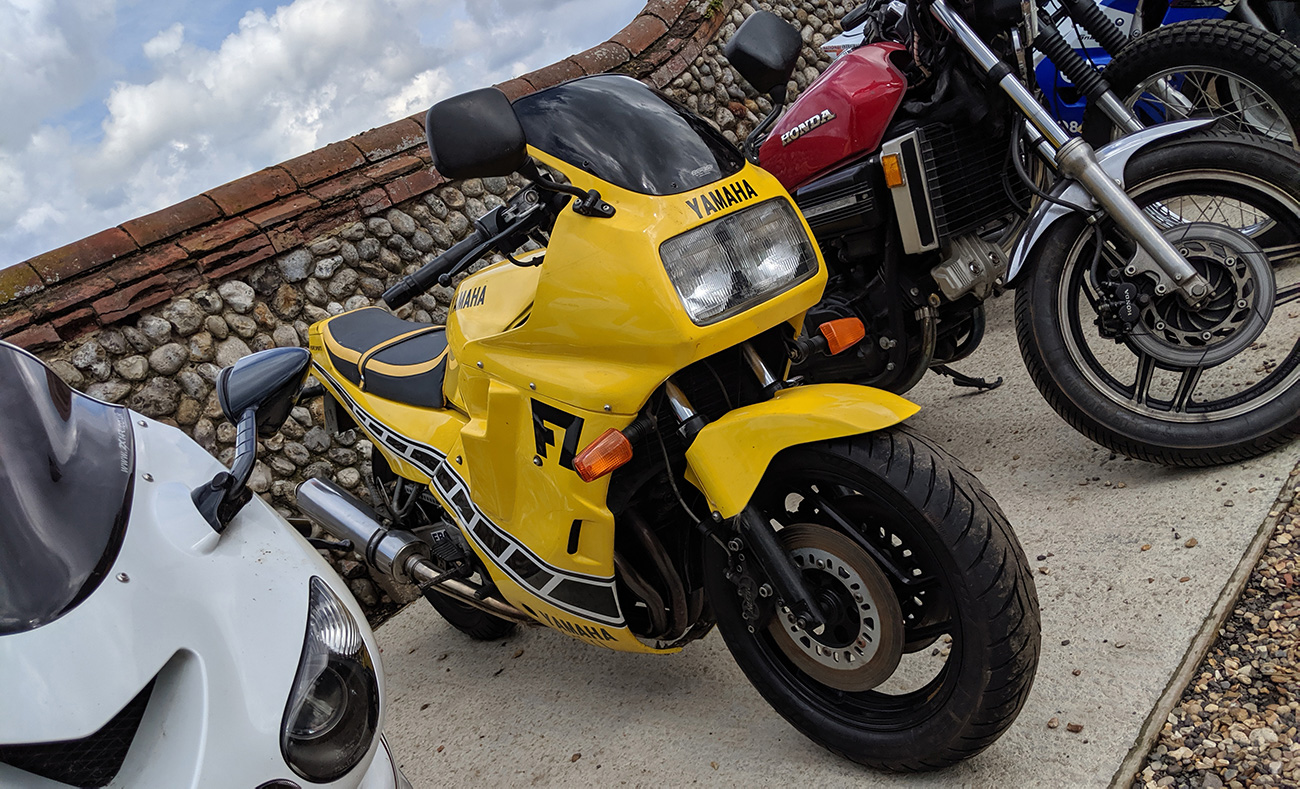
Brand new purchase
To get the basics out of the way first, if you’re purchasing your bike brand new from a dealer, they will typically sort everything out for you and make the process really quite luxurious – bar sorting out the insurance which is in your hands (speaking of, if you need a quote you can get one online with Lexham). Once everything is sorted, arrange yourself transport to the dealer to collect, or organise delivery to your home address if that is possible (especially given the current climate) which they may even do for free, locally.
As you may know, brand new vehicles will be MOT exempt for 3 years, and the tax & registration can be sorted out via the dealer – simply put, it’s all fairly straightforward, and you’ll be on the road having a blast before you know it.
Second-hand purchase
But the difficulties may be a bit more apparent when buying a bike or scooter second hand – particularly if purchasing privately. You’ll have to think about: the current MOT status, sorting out the tax, insurance, and transport (to & from). As mentioned earlier, if you’re buying John’s old Vespa T5 from around the corner, you’d probably get away with wheeling it down the road and in to your garage, sorting out the documents over a cup of tea (or beverage of your choice) and worrying about it later.
But if you’ve been trawling the various selling sites for months, and reluctantly increased the search radius to 250+ miles only to find the perfect machine at the other end of the country – you’ve got a bit of a task on your hands to collect the prize.
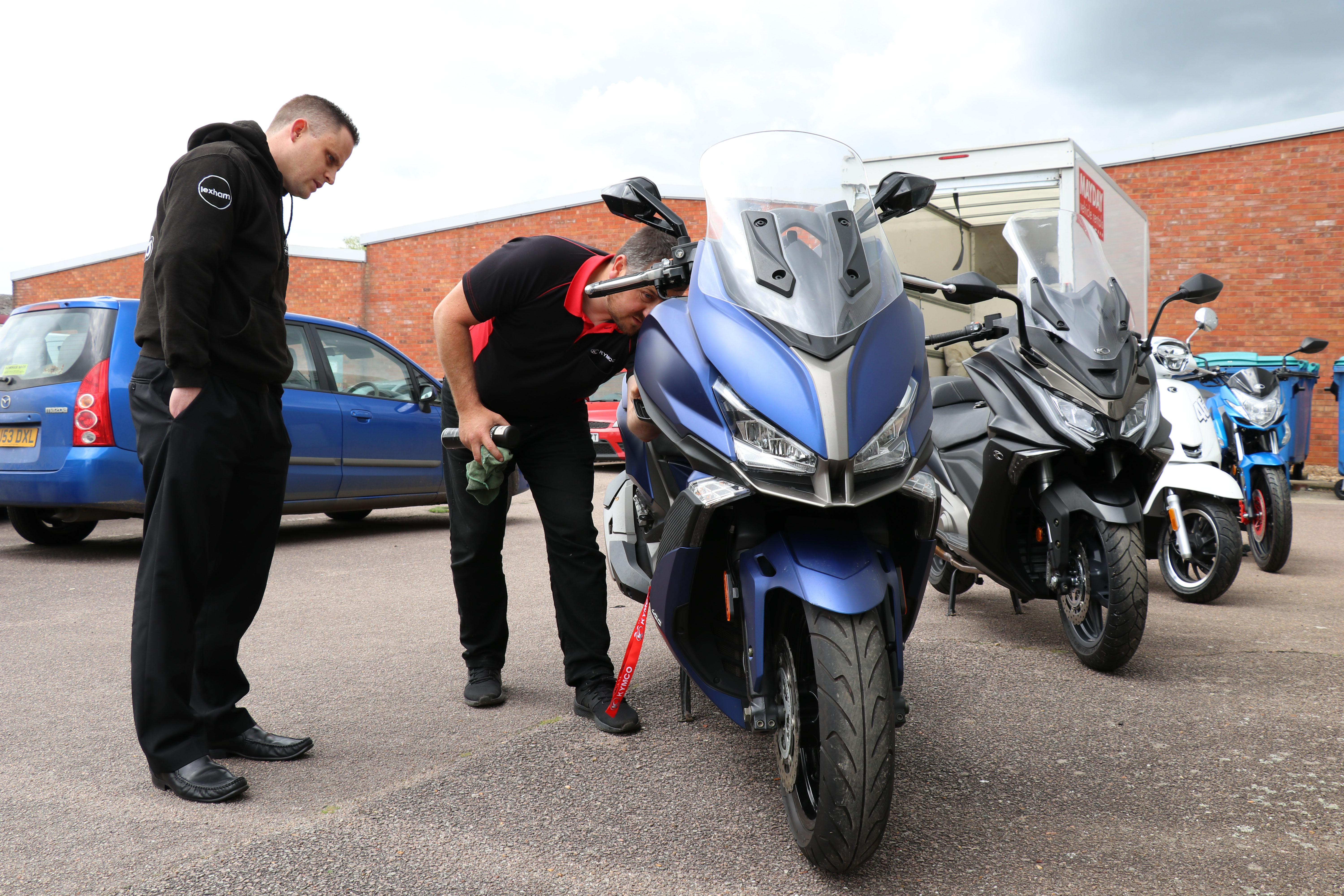
Viewing your new bike/scooter
I’d always recommend travelling up to view the vehicle and have a proper check around it before transferring any money (we've even got a handy tick list guide to buying a new motorcycle) even with the increase of vehicle 360's and video tours.
In fact, generally it’s not advised to send money for something you’ve not seen in any situation, unless it’s from a reputable seller - or you’re able to verify it’s the real deal over something like a video call. Whether it’s a deposit, holding fee or otherwise, personally I wouldn’t even consider letting your hard-earned cash leave your wallet unless you’re certain the listing is real. As is always said, if it’s too good to be true, it probably is.
Now, whether you travel there to check it out on the same day you purchase it, or view it and return on another day to collect the bike/scooter is entirely up to you. But factoring in both distance and how much you want the bike, it seems most buyers will travel with the full intention of making the purchase that same day – so if you’re seriously considering a bike or scooter, it’s worth acting fast - just remember too much haste can impair judgement. Never be afraid to walk away!
Man with van need not apply
If you have the luxury of a van or other large capacity vehicle, you’re already in a good place to turn up and secure it in the back of the van, driving away that same day without necessarily having to scramble to arrange tax, MOT and insurance (and maybe even breakdown cover).
If you haven’t got a van, you could always hire one from a local van hire for temporary transport – just remember to take fasteners (ratchet straps are the best), and make sure the van has fastening hooks/points. This is probably the best way, although renting vans at the weekend may mean limited opening times, and you could be stuck paying for 3 days rental (Saturday van pickup – Sunday bike collection – Monday van return), which isn’t great!
But yes, you could also hire someone with a van to do the work for you. There are plenty of specialised bike delivery companies out there who would be more than happy to arrange this for you, which you can find online.
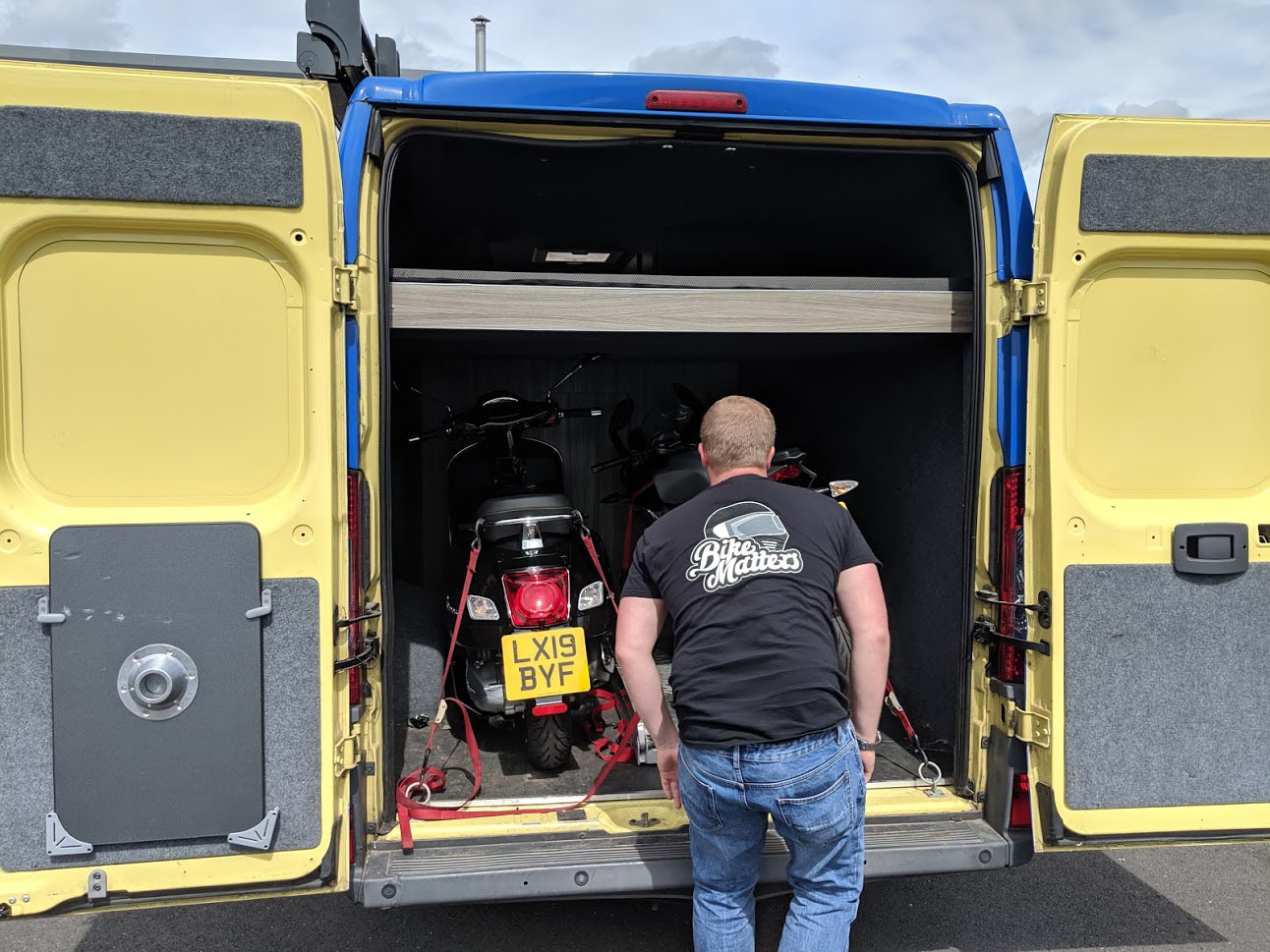
Any tips on fastening your bike down safely in a van?
There’s plenty of online tutorials out there which I’d seriously recommend checking out. Surprisingly, there’s quite an art to fastening a bike down and there is much more involved than just pulling it tight with all your strength.
The last thing you want is arriving home to find your sparkly new bike upside down, and back to front in the back.
In fact, a few paragraphs is no way near enough to cover this properly, but to summarise:
- The goal is to keep the bike secured evenly, under its own weight, and ideally not free to lean left or right. At minimum, try to have four independent ratchets – one for each corner, avoiding using handlebars and plastics as tying points.
- Try to compress the front and rear suspension a bit, whilst pulling the ratchets or fasteners tight in the opposite direction. If it has a centre stand, get it on there for extra stability. If it has a side stand, it’s worth sticking that out – but absolutely do not tie the bike down whilst tilted on to the side stand.
- I recommend using fabric loops to connect to the ratchet/fastener hooks to the bike - as you’ll want to limit scratching from the hooks - and ensure it is pulling the bike down from the best position.
- You’ll know it’s secured well when you can’t move the bike side-to-side or backwards & forwards.
- If you’re really worried about damage if it falls over, you could always throw an old duvet/blanket over the top, or on both sides of the bike – something to keep it warm, comfy & cushion any blows.
- Lastly, when driving back, take care on the roundabouts and sharp bends! The less sound you hear from the back of the van, the better.
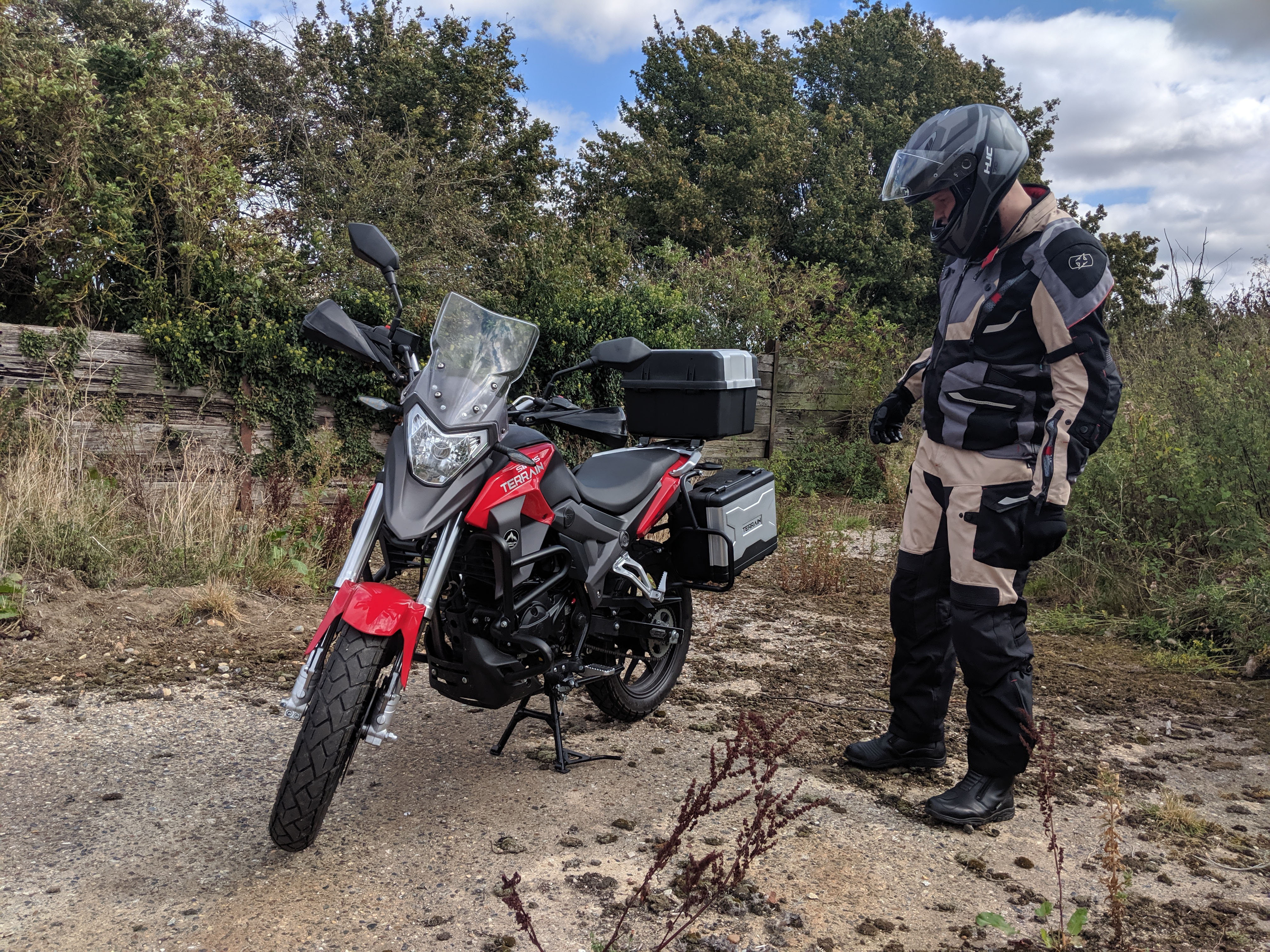
I prefer two wheels on the road, thank you!
Okay, if you’re keener on taking the voyage home on your bike - and let’s be honest who can blame you - there’s some important stuff to remember. I’ll take it that at this point you’ve already bought the bike, it’s just getting it home - so what do you need?
First things first, you will need to make sure it’s all good to go on the road – here’s our guide on how to give it a quick once-over, but I’d hope you’ve done this before handing over the cash. Once you’re happy that it makes all the right noises & the wheels are going in the right direction, it’s the legal stuff left to arrange.
Picking up your new ride checklist:
- V5 – make sure that you have the green new keepers slip (V5c) and the owner is sending off the V5 with your details, or even better completing it online whilst you’re there!
- MOT – hopefully the bike already has a valid MOT - if not, you can’t tax it (and if so, you’ll be arranging transport/delivery for it as it can’t be ridden)
- Road tax – this can be done online instantly, here: https://www.gov.uk/vehicle-tax
- Insurance – you can set up the policy over the phone or online to be effective immediately (bear in mind, a valid policy requires all of the above to be sorted also). If you’ll be traveling to the middle of nowhere, with no internet or phone signal (or it’s not during office hours), you can also set up a policy to start at a later date (typically within 30 days of enquiring). To do this, you’ll need all of the vehicle details including the registration number and a start date & time.
- Breakdown cover – not essential, but if it’s a second-hand bike you’ll be thrown in the deep end if you ride away on a bike/scooter that breaks down 100 miles from home. Get it sorted with your insurance, I’d say!
But what about my riding gear? Plus, how will I even get there?
This really depends where you’re picking up the new bike/scooter from. Obviously you can get a lift from a friend/family member, or use public transport to get there - maybe a taxi from the closest train or bus station. Obviously the risk here is that the purchase ends up being a lemon, and you’re filled with disappointment and anger stranded miles away from anything, with a return journey to look forward to.
If possible, it’s best to take someone with you so they can follow you home (or lead the way) and make sure everything is going well.
Chuck your gear in the boot of the car, or if you’re riding pillion then… yeah you’re sorted. Public transport may be a bit more of a chore when carrying your riding gear with you, but if you take a rucksack to fit most of it in you’ll be alright – or you can wear it all the entire trip there, up to you I suppose.
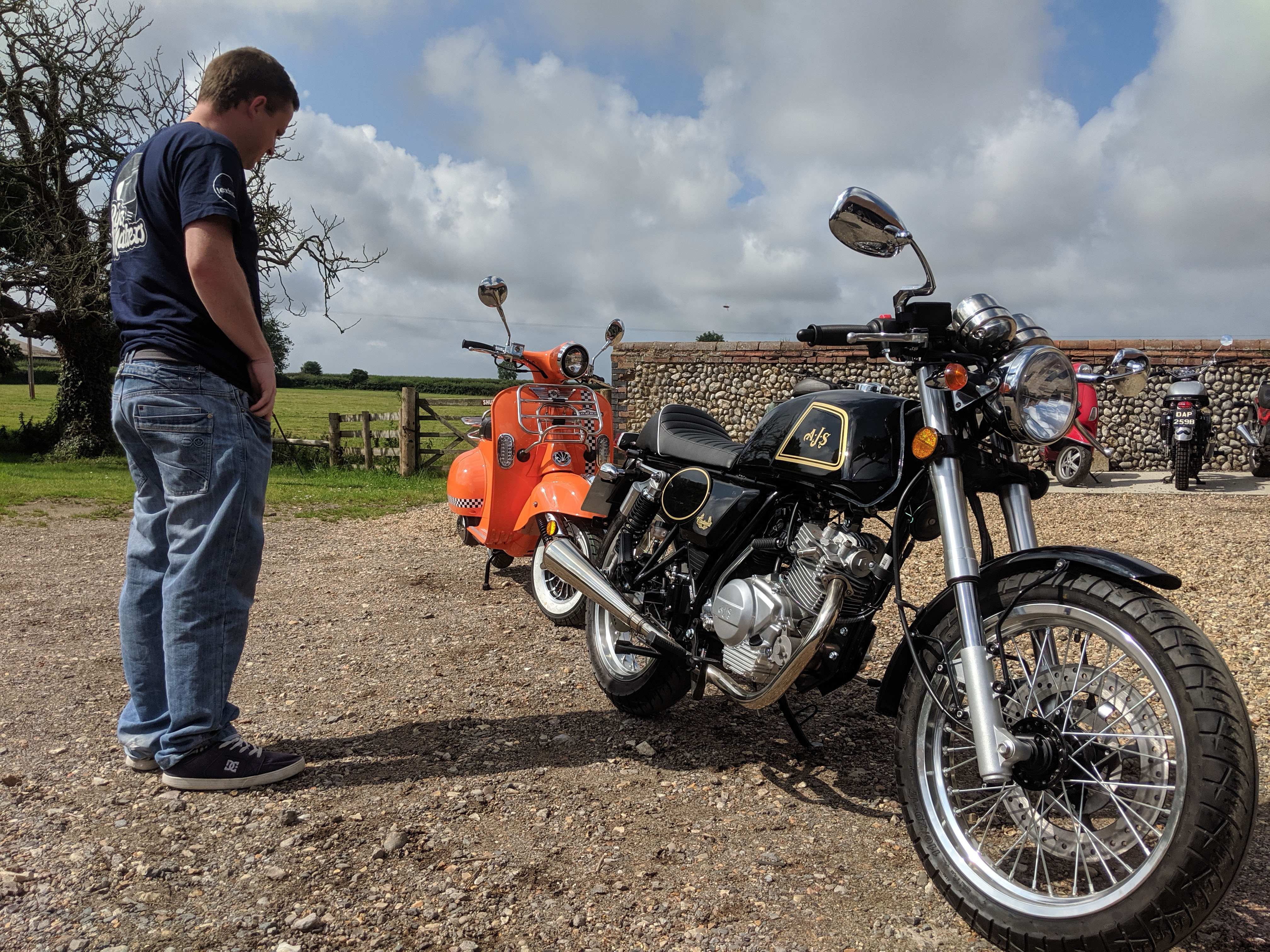
None of this will work for me, because: I am not old enough to ride it / I have not got the right licence / I can not insure it yet.
Other alternatives are:
- If you can’t get there, but can otherwise legally ride and insure the bike: Get someone you know (and trust) insured on the policy when setting it up, who wouldn’t mind riding your bike back. Definitely wine & dine them for this though.
- If you’re not old enough to ride the bike (and therefore don’t have the licence to ride it), you can’t legally set up an insurance policy yet – so you can’t insure it in your name and get someone else to ride it home/transport it for you. If something happened, the insurance may not be valid. You can look at temporary insurance policies for someone else to ride it, but given the circumstances you’re probably best avoiding this. The ideal solution here is to transport the bike home, or get it delivered.
I think that covers it!
There you go! A handy little guide to transporting your newly purchased bike home, I hope you have found it useful.
One thing before you go, if you are looking for transportation for your newly bought two-wheeler, check out Move Motorcycles. You can arrange collection or delivery by giving them a call on 07772024763 or simply book online.
Or, if you're after bike insurance, you can get a motorbike insurance quote directly with Lexham!
If there’s anything I missed, if you have any questions, or if you even have a horror story (or success story) to share with us, let us know on social media or comments below! I’ll be glad to hear them.

